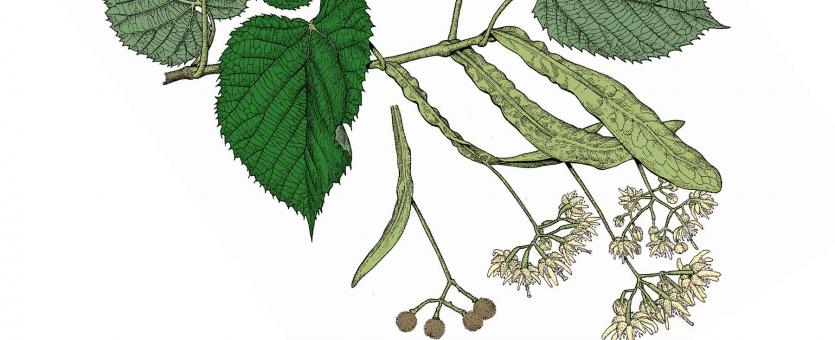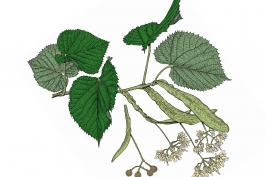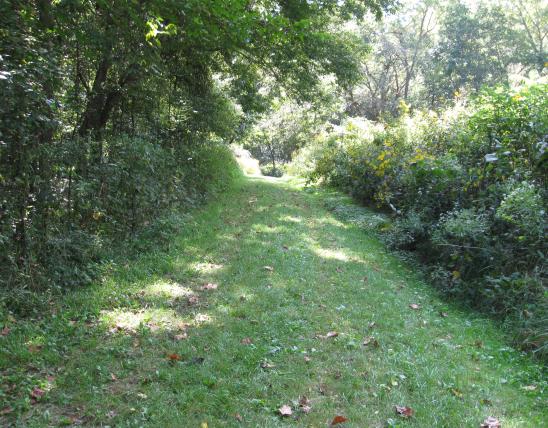
American basswood is a medium-sized tree with small, horizontal, often drooping branches forming a broad, rounded head.
Leaves are alternate, simple, 5–6 inches long, 3–5 inches wide, broadest near the base; margin coarsely toothed; tip pointed, base unequal, rounded; upper surface dark green, shiny; lower surface paler, with tufts of hair in the vein axils.
Bark is light brown to gray, with deep furrows and narrow, flat-topped, long ridges that shed small, thin scales. Often with sprouts around the base of older trees.
Twigs are slender, smooth, green to brown turning gray with age; pores numerous; winter buds dark red, egg-shaped, ¼ inch long.
Blooms late May–July; 6–15 flowers on a drooping, slender, smooth stalk; stalk attached to a strap-shaped, reduced leaf, 2–5 inches long, ¾-1½ inches wide, smooth, strongly veined; flowers pale yellow to whitish, fragrant, ½ inch in diameter.
Fruits August–October; dry, persistent, nearly round, ¼ inch long, covered with dense brown hairs.
Similar species: White basswood (T. heterophylla) has a more limited distribution in Missouri, occurring mainly along rocky woods and bluffs bordering streams. Its leaves are densely but not coarsely toothed, and the lower surfaces are covered with white or brown matted, woolly hairs.
Height: to 60 feet.

Statewide.
Habitat and Conservation
Occurs in moist woods on lower slopes, at the base of bluffs, and along streams. American basswood has a tendency to sprout from its roots, often forming clumps in the wild. Although widely distributed in the state, large populations are rarely encountered. In the eastern states that receive more rainfall and have richer soils, American basswood can reach 130 feet tall.
Human Connections
A fast-growing, long-lived tree popular for landscaping and along streets, its leaves turn yellow in autumn. The wood is used for carving, musical instruments, woodenware, toys, pulp, furniture, and boxes. Native Americans used the fibrous inner bark for making rope, thongs, baskets, and mats. The young leaves and the flowers are edible, and the flowers have been used as a medicinal "linden tea."
Ecosystem Connections
Bees make a high-quality honey out of the flowers’ nectar, and the fruit is eaten by many species of birds and rodents. Rabbits and deer browse the foliage.































